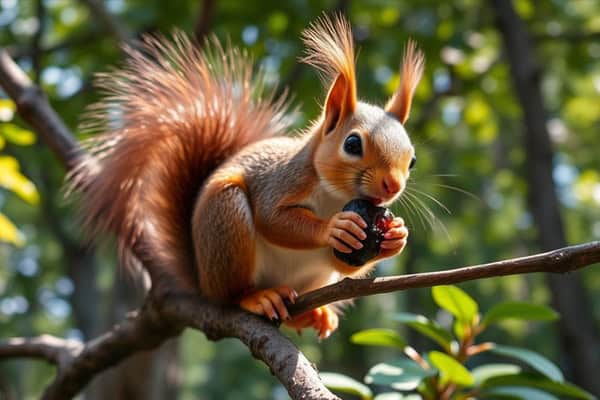Why Do Your Chickens Have Bald Spots? Causes and Fixes
Ever seen bald spots on your chickens? It worries any chicken owner. Knowing why chickens lose feathers is key to keeping them healthy. We’ll look at the reasons behind feather loss and how to fix it.
We’ll cover everything from molting to stress and bad food. You’ll learn about the causes of feather loss and how to fix bald spots. We’ll also talk about why checking your chickens often is important. This way, they stay healthy and happy. Let’s find out what’s behind those bald spots!
Understanding the Natural Molting Process
Our chickens go through a natural molting phase, which is important for their health. During this time, they shed old feathers for new ones. Knowing about the chicken molting process helps us take good care of our flock.
What is Molting?
Molting is when chickens shed and grow new feathers. It happens once a year in older birds, usually in the fall. This time helps keep their feathers in good shape and prepares them for the seasons.
Signs of Molting in Chickens
It’s key to know the signs of molting in chickens. We can see
- Loss of feathers, starting from the head and progressing downwards.
- Changes in behavior, including a potential decrease in egg production.
- Chickens may appear more tired or less active than usual.
- Increased dust bathing as they clean their feathers.
A chicken with bald spots near the vent might have mites or stress, not just molting.
Duration and Frequency of Molting
Molting can last from 4 to 12 weeks or more. Knowing this helps us understand when to expect less eggs. Adult hens start molting around 18 months, and younger chicks may molt partially at 20 weeks. Keeping an eye on them ensures we care for them well during molting.
Common Reasons for Feather Loss
Knowing why chickens lose feathers helps us keep them healthy. Many things can cause this problem. Fixing these issues quickly is key to our flock’s health.
Pecking Order and Bullying
The pecking order in a chicken coop sets a hierarchy. Bullying happens when strong birds show their power. This hurts the feathers of weaker birds, especially on their neck and back.
Chickens who are hurt, especially if they bleed, get bullied more. We must keep them safe by separating them.
Overcrowding and Boredom in the Coop
Too many chickens in a small space leads to feather loss. Chickens need at least 10 square feet each to be happy. When they’re too close, they get bored and may hurt each other’s feathers.
Having the right number of hens and roosters helps. We should check on our chickens often to see if they’re stressed or upset.
Impact of Stress on Feather Loss
Stress is a big reason for feather loss in chickens. Things like changes in their environment and not enough space can stress them out. Keeping the coop clean and providing treats like mealworms helps.
Watching how our chickens act helps us catch any signs of stress early. This way, we can help them before it’s too late.
| Factor | Effect on Feather Loss | Prevention Strategies |
|---|---|---|
| Pecking Order | Leads to bullying and feather damage | Monitor flock dynamics and separate aggressive birds |
| Overcrowding | Causes boredom and subsequent pecking | Provide at least 10 sq ft per chicken and proper ratios |
| Chicken Stress | Contributes to feather loss | Implement regular coop maintenance and enrichment activities |
Why Do Your Chickens Have Bald Spots?
It’s important for us to know why chickens get bald spots. This helps us keep our chickens healthy and happy. We need to look at things like parasites, not enough food, and bad habits.
Identifying the Causes of Bald Spots
Seeing bald spots in chickens means we need to figure out why. It could be normal molting or something more serious. Looking at where the bald spots are can tell us a lot. For example, spots near the tail might mean chickens are picking at each other.
The Role of External Parasites
Parasites like mites and lice can cause bald spots. They make chickens scratch and pick at themselves. We need to check our chickens often for these pests. If we find them, we must act fast to help our chickens.
Nutritional Deficiencies and Their Effects
Not enough good food can make chickens lose feathers. A bad diet makes their feathers weak. We need to give them food that has all the right stuff to keep their feathers strong.
| Cause | Symptoms | Solutions |
|---|---|---|
| External Parasites | Red skin, irritation, bald spots | Regular monitoring and treatment |
| Nutritional Deficiencies | Weak feathers, bald spots | Provide complete and balanced feed |
| Behavioral Issues | Feather-picking, bald areas | Enrichment and space management |
Effective Solutions and Prevention Strategies
To solve bald spots in chickens, we need a full plan for their care. We should look at their living space, food, and how they interact. This way, we can keep our chickens healthy and their feathers in good shape.
Maintaining a Healthy Environment
A clean, big coop is key for our chickens’ health. Each bird needs 3-4 square feet to avoid feeling crowded. This helps prevent fights and feather loss.
Regular cleaning and using natural bug powders like Bugs Away fight off mites and lice. These pests can make chickens lose feathers. Also, monthly checks for bugs are important.
Offering dust baths with dirt, ash, and shavings helps keep bugs away. Natural treatments make our chickens happy and calm.
Enhancing Chicken Nutrition
Good food is important to stop bald spots. Feathers are mostly protein, so a protein-rich diet is needed. When they molt, they need 18% protein in their food.
Feeding them high-protein treats and layers pellets helps. Supplements like Life-Guard Poultry Tonic add vitamins A and D. Adding apple cider vinegar to their water boosts their immune system.
Managing Pecking and Aggression
Stopping fights in chickens is crucial. We can separate pecking birds but keep them seen by others. This keeps the peace. Giving them lots of perches and nesting spots helps too.
By doing these things, we can fix bald spots and make a happy home for our chickens. We suggest these tips to all chicken owners to help their birds stay healthy.
| Aspect | Recommendation | Benefits |
|---|---|---|
| Space | 3-4 sq. ft. per chicken | Prevents overcrowding, reduces stress and aggression |
| Diet | High-protein feed (18% during molt) | Supports feather regrowth, improves overall health |
| Cleanliness | Monthly coop checks and cleaning | Reduces risk of parasites and diseases, maintains a healthy environment |
| Dust Baths | Dirt, wood ash, and wood shavings | Helps control external parasites naturally |
| Supplementation | Life-Guard Poultry Tonic | Enhances immune function, aids feather conditioning |
Read More🐦Related Articles:
| Birds with Black Heads |
| Small Birds With Yellow Chests |
| How Long Do Chickens Live |
| Brahma Chicken Care Tips & Facts |
| Florida Birds Of Prey |
Conclusion
In this summary of chicken bald spots, we’ve looked at why chickens lose feathers. We learned how important it is to keep our chickens healthy. This helps them stay vibrant and happy.
We talked about how to stop feather loss. We can do this by watching our chickens’ environment and making sure they eat well. Also, We need to manage how they interact with each other.
By doing these things, we help our chickens stay well. We can spot when they’re molting or dealing with bullies. This stops problems that can hurt their health.
With the right steps, we can make our chickens’ lives better. A happy chicken looks great and lays eggs well. Let’s use what we’ve learned to help our flocks thrive.







